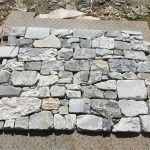Introduction:
In the world of architecture and interior design, the Mid-Century Modern style has stood the test of time as a timeless and iconic design movement. Characterized by clean lines, minimalistic aesthetics, and a focus on functionality, Mid-Century Modern design has influenced countless homes and buildings around the world. One key element that plays a significant role in achieving the distinctive look of Mid-Century Modern design is cultured stone.
Cultured stone, also known as manufactured stone or faux stone, has become a popular choice for architects, designers, and homeowners looking to incorporate the Mid-Century Modern aesthetic into their spaces. In this article, we will explore the history of Mid-Century Modern design, the characteristics of cultured stone, and how this versatile material can be used to create stunning Mid-Century Modern-inspired spaces.
The History of Mid-Century Modern Design:
The Mid-Century Modern design movement emerged in the mid-20th century, roughly from the 1940s to the 1960s, and is often associated with post-World War II America. Influenced by the modernist principles of simplicity, functionality, and a connection to nature, Mid-Century Modern design sought to create spaces that were both aesthetically pleasing and practical for everyday living.
Key characteristics of Mid-Century Modern design include open floor plans, large windows to bring the outdoors in, flat planes, and the use of natural materials such as wood, stone, and glass. The design movement was championed by renowned architects and designers such as Frank Lloyd Wright, Charles and Ray Eames, and Eero Saarinen, whose innovative creations continue to inspire designers to this day.
Cultured Stone: A Versatile Material for Mid-Century Modern Design:
Cultured stone is a man-made material that replicates the look and feel of natural stone, making it a cost-effective and versatile alternative for incorporating stone elements into architectural and interior design projects. Made from a mixture of cement, aggregates, and iron oxides, cultured stone can be molded and colored to mimic a wide range of natural stone varieties, including limestone, granite, and slate.

One of the primary advantages of cultured stone is its lightweight nature, which makes it easier to install than traditional stone materials. Additionally, cultured stone is more affordable than natural stone, making it an attractive option for budget-conscious projects. Despite its synthetic composition, cultured stone closely resembles natural stone in texture, color, and durability, making it a popular choice for both residential and commercial applications.
How to Use Cultured Stone in Mid-Century Modern Design:
When incorporating cultured stone into a Mid-Century Modern design scheme, it is essential to consider the overall aesthetic and desired effect of the space. Cultured stone can be used in a variety of ways to enhance the Mid-Century Modern look, from accent walls to fireplace surrounds to exterior cladding.
One common application of cultured stone in Mid-Century Modern design is as a focal point in the living room or family room. A fireplace clad in cultured stone can add warmth and texture to the space while serving as a visual anchor for the room. mosaic tile for sale for a sleek, linear design with clean edges to complement the minimalist style of Mid-Century Modern design.
In the kitchen, cultured stone can be used to create a striking backsplash that adds visual interest and texture to the space. Consider a stacked stone pattern in a neutral color palette to complement the clean lines and simplicity of Mid-Century Modern cabinetry and furnishings.
For exterior applications, cultured stone can be used to create a striking entryway or accent wall that sets the tone for a Mid-Century Modern-inspired home. Pair cultured stone with wood siding, metal accents, and large windows to create a cohesive and stylish exterior facade that pays homage to the iconic design principles of the Mid-Century Modern movement.
Maintenance and Care of Cultured Stone:
While cultured stone is a durable and low-maintenance material, it is essential to follow proper care and maintenance practices to ensure its longevity and appearance. Regular cleaning with a mild detergent and water can help remove dirt and debris from the surface of the stone, keeping it looking fresh and vibrant.
Avoid using harsh chemicals or abrasive cleaners on cultured stone, as these can damage the surface and affect the color and texture of the material. Instead, opt for gentle cleaning solutions and a soft-bristled brush to remove stubborn stains or grime.
Sealing cultured stone can help protect it from water damage and staining, especially in high-traffic areas or exterior applications. Consult with the manufacturer or a professional installer to determine the appropriate sealer for your specific cultured stone product and follow the recommended application instructions.
Conclusion:
The timeless elegance and versatility of Mid-Century Modern design continue to inspire architects, designers, and homeowners around the world. Cultured stone offers a cost-effective and stylish way to incorporate the distinctive look of Mid-Century Modern design into residential and commercial spaces, adding warmth, texture, and visual interest to any project.
Whether used as a focal point in the living room, a striking backsplash in the kitchen, or an eye-catching exterior cladding, cultured stone can help capture the essence of Mid-Century Modern design while providing the durability and practicality required for modern living. By embracing the beauty and innovation of cultured stone, you can create stunning and sophisticated spaces that pay homage to the iconic design movement of Mid-Century Modern style.
